Amazing Facts About An Amazing Religion
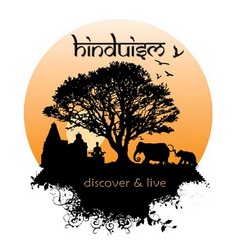
Hinduism is a fabulous religion as well as the world's third largest religion, with 95% of the Hindus living in a single nation.
Hindus believe in a circular time frame, rather than the linear time concept of the western world. Each time cycle has four main periods - the Satya Yuga, Tretha Yuga, Dwapara Yuga and Kali Yuga. Then, the cycle starts all over again.
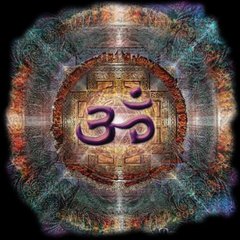
Hinduism is the oldest of the major extant religions. Its fundamental book - the Rig Veda - was written over 3800 years ago. Rig Veda was orally passed on for 3500-odd years. Yet, in its current form, it has no major discrepancies. It is indeed a stupendous achievement that a major body of work can be orally passed down generations with no loss in quality or content.
Unlike other religions, Hinduism doesn't consider the pursuit of wealth a sin. In fact, wealth is celebrated in the form of many gods, such as Lakshmi, Kubera and Vishnu. Hinduism has a four-level hierarchy: Kama (pursuit of pleasures, including sexual/sensual); Artha (pursuit of livelihood, wealth and power); Dharma (pursuit of philosophy, religion and doing one's duty to society); and Moksha (liberation). We progress from the top to bottom. This is very close to Maslow's hierarchy and thus, Hindus are natural capitalists.
Hinduism is the parent religion for two of the other major religions of South Asia - Buddhism and Sikhism. It is also closely associated with its sister religion - Jainism.
The holiest number for Hindus is 108. This is the ratio of the Sun's distance (from earth)/Sun's diameter or Moon's distance (from earth)/Moon's diameter. Thus, most of our prayer beads have 108 beads.

Beyond India, Hinduism is the dominant religion of many exotic regions such as Nepal, Mauritius, Bali, second biggest religion of Fiji & Sri Lanka and at one point covered most of South east Asia - including Indonesia, Cambodia and Malaysia.
The Hindu epic of Mahabharatha - often used to teach the principles of Hinduism - is written in a 1.8 million words-long poem (10 times the combined length of Greek epics, The Illiad and The Odyssey.
Unlike other major religions, Hinduism doesn't have a founder or prophet (like Moses, Abraham, Jesus, Mohammad or Buddha).
Unlike the popular Western conception, Yoga in Hinduism is not merely an exercise routine. It is one of the founding blocks of the religion.
The four holiest animals of the Hindus are the cow, elephant, snake and peacock.
The largest religious structure in the world - Ankor Vat in Cambodia - was built by Hindu kings of South East Asia.
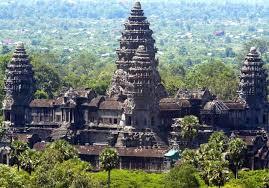
Hinduism has no formal institution - no Pope, no Bible, no central body. Unlike Christians or Muslims, one can visit a temple at any time, on any day. There are no special Sunday congregations or Friday prayers.
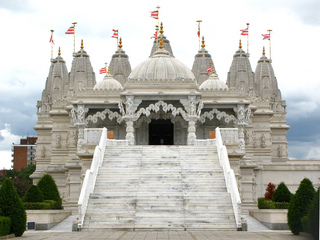
The most mind boggling thing about Hinduism is the fact that atheism is a part.Religions are classified according to their beliefs in God: Atheism - no God, Monotheism - One God, Polytheism - Many Gods. While most of the popular religions fall into one of the three categories mentioned above, Hinduism is the only religion which can be accurately, yet not fully described individually, by all these terms: Hinduism is Atheist at the same time as it is Polytheist at the same time as it is Monotheist, as well as henotheistic, i.e. belief in one major God with other subsidiary Gods "worshippable" too! Oh, and Hinduism can also be considered "monist" i.e. the belief that all the seemingly disparate elements in this universe can be reduced to one single unity. There are a sect called Cārvāka, who simply put "don't care whether God exists or not". Two more philosophical schools of thought, Mimamsa and Samkhya maintain a healthy tradition of philosophical skepticism!
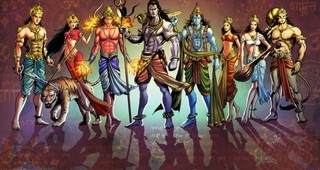
A healthy argumentative tradition has been the defining point of Hinduism even from its early days, when its prime scripture, the Rig Veda was written. Look at this hymn on the origin of creation: Who really knows? Who will here proclaim it? Whence was it produced? Whence is this creation?The Gods came afterwards, with the creation of this universe. Who then knows whence it has arisen?Whence this creation has arisen - perhaps it formed itself, or perhaps it did not - the One who looks down on it, in the highest heaven, only He knows or perhaps even He does not know. - Nasadiya Shloka, Rig Veda c.1700 - 1100 BC
Hindu scriptures are organized into Vedas (poems that written in multiple levels from abstract rural level and going deeper into cosmic universe), Upanishads(scientific discourses and arguments about the world), Brahmanas (manuals for ritual performances), Aranyakas (experiments done on human mind and nature in the forests), Puranas (mythologies about Hindu gods) and Itihasas(notebooks on "historical" events").
Among the world's great religions, Hinduism is the only mainstream religion which promotes gender equality in "Gods". Hinduism has perfectly complementary female counterparts to almost all of their male Gods (with the exception of "celibate" Gods male and female), and in fact Hinduism proclaims the Holy Trinity of Hinduism (Brahma, Vishnu and Shiva) acquired their present powers at the expense of the Supreme Mother Goddess who pervades the cosmos with her energy. Entire cults exist in Hinduism who focus on worshipping the esoteric female energy.
Hinduism is the most popular non-proselytizing religion which has survived inspite of it, to this day withstanding onslaughts from other missionaries. Except Hinduism and Judaism, all of the other major religions of the world carry out active missionary work. Hinduism inherently accepts that there is no "One Truth", there are many truths in this Universe, each as true as the next. A popular Hindu line of thought runs thus: "Just like many rivers reach the ocean, there are many ways to reach God". For how could a religion with such a vast diversity in its own traditions purport to uphold "one true way"?
Hindus don't mourn for anything and believe that happiness is the highest form of religious achievement. Thus, unlike most other religions there is no sad festivals for us where we are supposed to mourn.
Hindus strongly believe in rebirth and karma. That means my next birth will be determined by my actions of this birth.
Fire & Light are among the holiest of offerings for Hindus. The concept of Yajna - offering things to fire - is considered one of the highest forms of worships in Hinduism. It symbolizes the idea that everything meets its end.
What is amazing is the fact that despite having been exposed to proselytizing religions such as Buddhism, Jainism, Christianity and Islam at various points in time, Hinduism remained undaunted. A unique feature is the way these religions and their traditions are absorbed into mainstream Hinduism. Buddha became one of the God pantheon, a syncretic "Hindu-Islam" religious way such as Hindus praying at Sufi shrines evolved, Gods with Muslim origins such as "Kad - Bibi" in South India came to be worshipped. Lord Venkateshwara is said to have a Muslim wife: Bibi Nanchari!
Dashavatara, the various reincarnations of Vishnu, is in accordance with the theory of evolution. 1. Matsya - the fish. All life on earth began in water. 2. Kurma - the tortoise. Life starts to move out of the water, an amphibian. 3. Varaha - the boar. A complete land animal. 4. Narasimha - half-man/half-lion. 5. Vamana - the little man. 6. Parashurama - the angry man a savage being. 7. Rama - the ideal man. 8. Krishna - The street smart man.
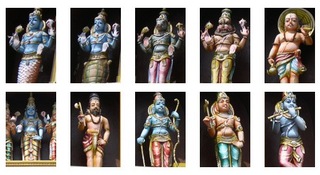
கருத்துகள் இல்லை:
கருத்துரையிடுக